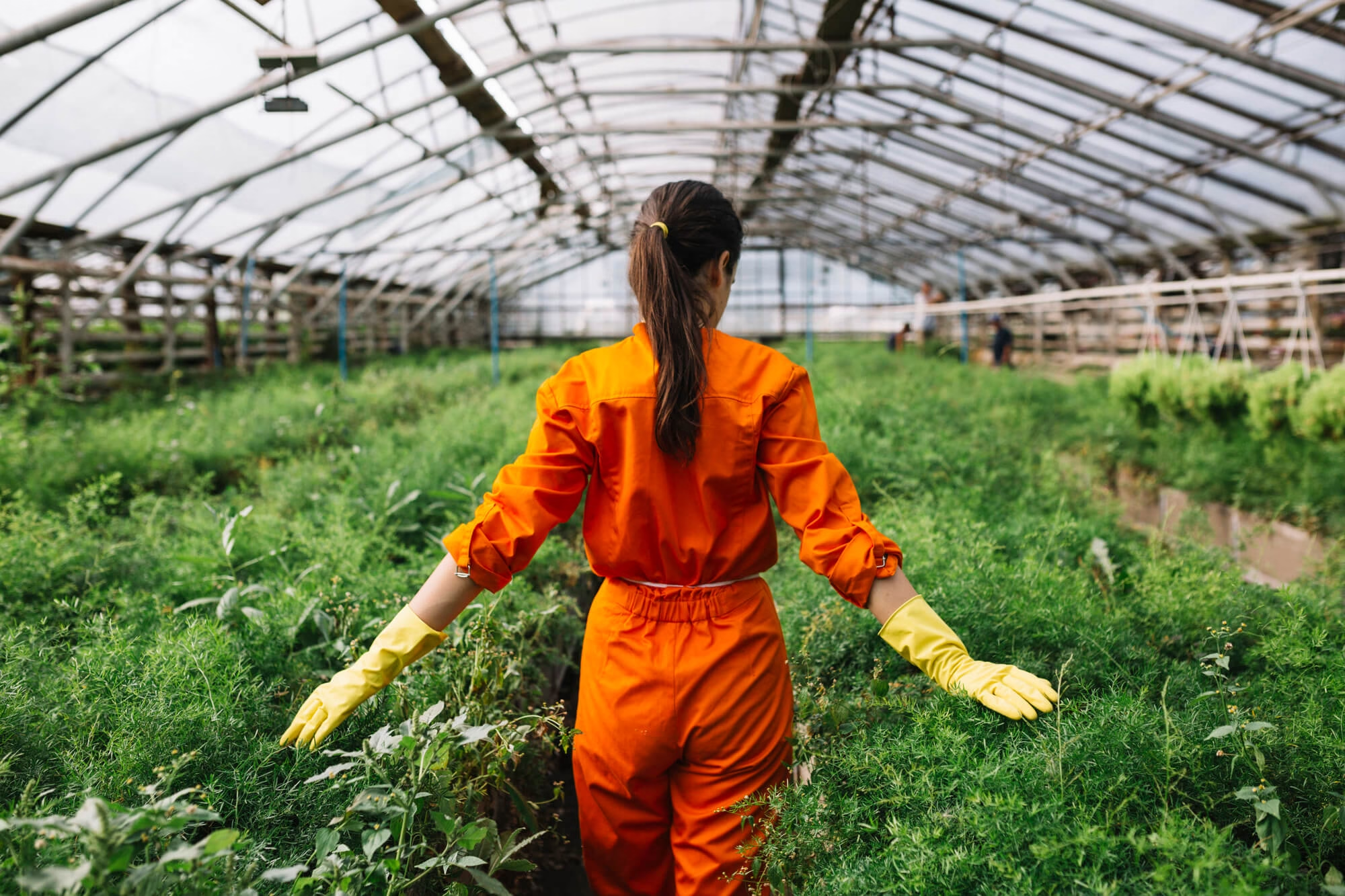Organic farming is essential for sustainable agriculture, enhancing environmental health, economic viability, and social balance. By eliminating synthetic inputs, it promotes biodiversity and improves soil health through practices like crop rotation and composting. Despite challenges such as maintaining soil fertility and pest control, strategic methods and technological advancements pave the way for a sustainable agricultural future.
Organic Farming for Urban Areas | Small Space Solutions
Urban residents can grow organic produce despite space limitations through innovative methods like vertical gardening, container gardening, and square foot gardening. These approaches enhance health, sustainability, and biodiversity while reducing costs. As urban populations rise, small space organic farming becomes essential for sustainable food production, supported by education and community initiatives.
Effects of Phenylalanine on Health | A Comprehensive Analysis
The health effects of phenylalanine are crucial for researchers and health professionals. Phenylalanine is an essential amino acid involved in protein synthesis and various metabolic processes. This analysis delves into the evidence surrounding phenylalanine, exploring its benefits, potential risks, functions, sources, and effects on overall well-being. What is Phenylalanine? Phenylalanine is an amino acid found in many proteins’ rich food chains, such as meat, fish, eggs, and dairy products. It is also present in artificial sweeteners like aspartame. The body converts phenylalanine into tyrosine, another amino acid essential for producing neurotransmitters like dopamine, norepinephrine, and epinephrine. Dual Nature of Phenylalanine 1. Good Nature Phenylalanine works as a building block for proteins essential for life. It is crucial for various physical functions. Additionally, it functions as a precursor for important neurotransmitters including dopamine, norepinephrine, and epinephrine Therefore, adequate consumption is important for overall health. 2. Bad Nature Excess phenylalanine may contribute to health problems, especially in people with some genetic disorders. High levels may also reduce the absorption of other amino acids. So, it is significant to keep a balance. Sources of Phenylalanine 1. Natural Source Many foods contain phenylalanine naturally. This includes meat, fish, eggs, and dairy products. Moreover, plants-based sources like soy and nuts are rich in this amino acid. So, a balanced diet usually provides sufficient amounts. 2. Artificial Sources Artificial sweeteners, particularly aspartame, contain phenylalanine. These are common in diet sodas and sugar-free products. As a result, people sensitive to phenylalanine must be cautious with these items. Risks and Side effects of Phenylalanine Despite its benefits, phenylalanine can cause risks, especially for individuals with phenylketonuria (PKU). Elevated levels of phenylalanine in PKU individuals can cause intellectual disability, brain damage, and other serious health issues, Therefore, they should follow a low phenylalanine diet. Phenylalanine and Cancer An important concern is whether phenylalanine can cause cancer. Studies on artificial sweeteners containing phenylalanine, like aspartame, have produced mixed results. Some animal studies suggested a possible cancer risk, but extensive human studies have not confirmed these findings. Regulatory agencies, including the FDA and EFSA, have believed aspartame safe for general consumption within certain limits. Safe Consumption Guidelines For most people, there is no risk from consuming phenylalanine through a balanced diet. However, it is essential to consider safe intake levels, especially when consuming products containing artificial sweeteners. Moderation is key. The following list provides general guidelines: Future Studies Researchers should continue to investigate the health effects of phenylalanine. Its role extends to areas of mental health, pain management, and digestive processes. Long term studies can provide valuable insights into its safety and usefulness, particularly regarding artificial sweeteners. Conclusion By knowing the health effects of phenylalanine, it is important for creating informed dietary choices. Although it does offer several benefits, it is necessary to consider individual health conditions and consume it in moderation, Upcoming research will clarify its role in human health and potential risks.
How PFAS Chemicals Build Up in the Food Chain
Per- and polyfluoroalkyl substances (PFAS) are a group of synthetic chemicals that find wide use due to their water and grease resistant properties. These man-made chemicals have earned the nickname “forever chemicals” due to their persistence in the environment and living organisms. Their potential health effects combined with their persistence in the environment make this an issue of high concern. One of the major problems is how PFAS bioaccumulate into the food chain, leading to the exposure of different kinds of wildlife, including human beings. What are PFAS? PFAS have strong bonds between carbon and fluorine, which make them persist in the environment. These “forever chemicals” do not break down easily. Instead, they can stay in the environment for decades or even centuries. They resist heat, sunlight, and many natural processes. As a result, they occur widely in the environment. They can travel long distances through water and air, contaminating remote areas far from their source. Common sources of PFAS Chemicals PFAS chemicals are now everywhere in the world and are used in thousands of consumer products and many industrial sectors. In addition, their good properties that repel water and oil are widely used. This widespread use has also led many of them to exist in our environment. Understanding the common sources of PFAS chemicals helps us know where we may be exposed and enables the design of strategies to reduce its impact. Some of the most prevalent sources include: Bioaccumulation in the Food Chain Bioaccumulation is the gradual accumulation of substances, such as chemicals or pollutants, in an organism over time. This occurs when an organism absorbs the substance at a rate faster than it can be eliminated or metabolized. PFAS chemical enter the food chain through contaminated water and soil. First, aquatic organisms absorb and store these chemicals in their tissues. Meanwhile, on land, plants uptake it from polluted soil. Subsequently, herbivores consume these contaminated plants, introducing PFAS into the infected food chain. As smaller fish ingest contaminated water or prey, they accumulate PFAS. Then, larger predators consume these contaminated fish, further concentrating PFAS in their bodies. Consequently, PFAS levels emphasizes as they move up the food chain, reaching their highest concentrations in top predators. Health Impacts of PFAS Bioaccumulation Humans are at the top of the food chain and can be exposed to PFAS chemicals through the intake of contaminated fish, dairy products, meat, and crops. Drinking water is also an important source of risk in areas with PFAS contamination. The bioaccumulation of PFAS in the food chain has serious health implications. Studies have linked PFAS exposure to various adverse health effects, including: Environmental impact Beyond human health, PFAS bioaccumulation also impacts wildlife. Predatory species at the top of the food chain, such as eagles, otters and polar bears, can suffer from high PFAS levels. This can lead to fertility issues, hormonal imbalances, and increased mortality. Additionally, the persistence of PFAS in ecosystems can disrupt entire food webs, leading to long-term ecological consequences. Conclusion PFAS bioaccumulation is an important environmental and public health issue. These persistent chemicals build up in the food chain, posing a risk to both wildlife and humans. By knowing the ways of PFAS bioaccumulation helps us recognize the importance of reducing their use, improving waste management practices, and enforcing strict regulations. By taking these steps, we can reduce the impact of PFAS on our health and the environment.




